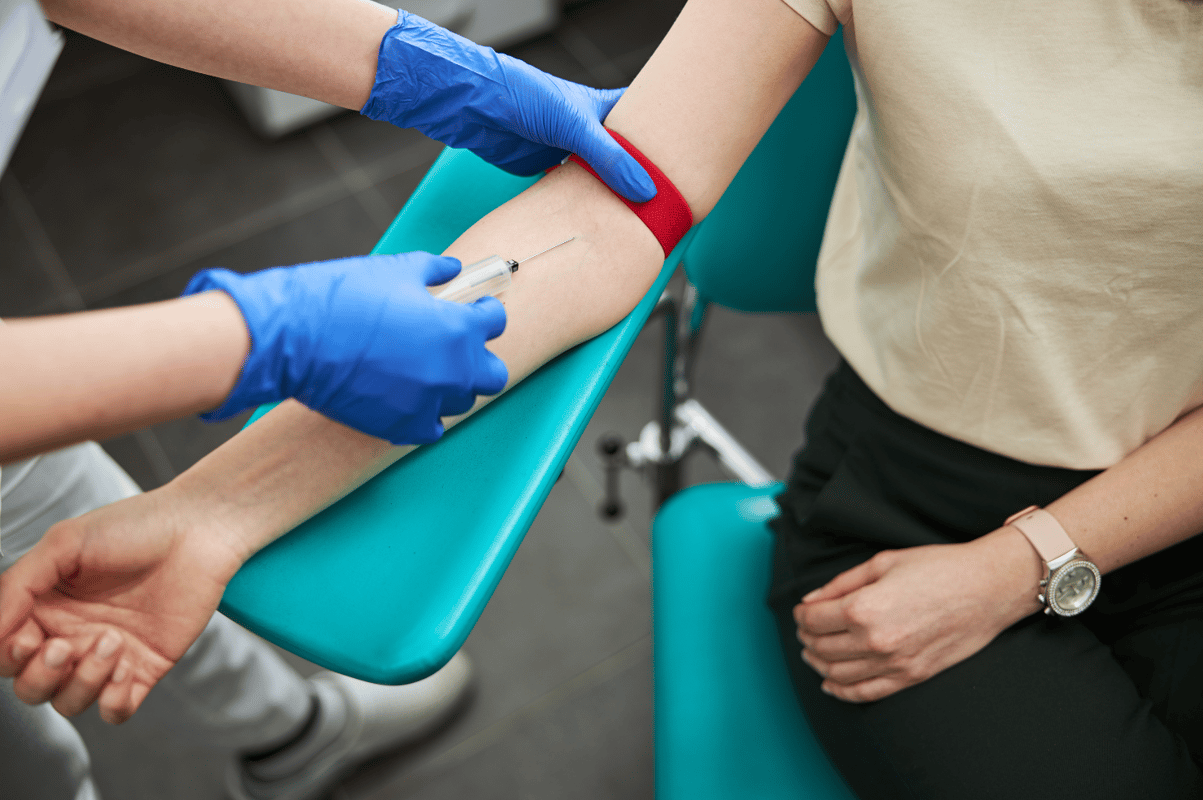How to Become a Phlebotomist? | Everything You Need to Know

In this blog, we'll guide you through everything you need to know about how to become a phlebotomist. Let's explore this rewarding career path together!
Key Points
- Phlebotomy involves drawing blood from patients for diagnostic testing, donations, and treatments.
- Phlebotomist is a trained medical professional who performs the drawing of blood.
- To become a phlebotomist, one typically needs a high school diploma and completion of a phlebotomy training program.
- Certification isn't always mandatory but many employers prefer certified phlebotomists.
- Certification involves passing an exam after completing a training program accredited by organizations like the NHA or ASCP.
- The average phlebotomist salary is approximately $41,810 per year in the US.
What is the outlook for phlebotomist jobs?
The BLS predicts an 8% increase in phlebotomist jobs from 2022 to 2032, which is quicker than the average growth rate for most careers. For a clearer understanding, here's a breakdown of the estimated number of phlebotomist jobs in each state across the U.S. Note that these estimates might not add up to the total because they exclude some specific job categories and self-employed workers.
- Alabama: 2,490
- Alaska: 130
- Arizona: 4,430
- Arkansas: 1,010
- California: 13,010
- Colorado: 2,180
- Connecticut: 1,560
- Delaware: 250
- District of Columbia: 190
- Florida: 9,060
- Georgia: 5,920
- Hawaii: 400
- Idaho: 630
- Illinois: 7,830
- Indiana: 2,770
- Iowa: 1,320
- Kansas: 1,010
- Kentucky: 2,360
- Louisiana: 2,540
- Maine: 670
- Maryland: 2,630
- Massachusetts: 2,930
- Michigan: 3,210
- Minnesota: 1,360
- Mississippi: 1,350
- Missouri: 2,030
- Montana: 520
- Nebraska: 850
- Nevada: 1,020
- New Hampshire: 650
- New Jersey: 4,290
- New Mexico: 710
- New York: 6,090
- North Carolina: 5,020
- North Dakota: 230
- Ohio: 5,290
- Oklahoma: 1,860
- Oregon: 1,880
- Pennsylvania: 5,330
- Puerto Rico: 940
- Rhode Island: 710
- South Carolina: 2,640
- South Dakota: 390
- Tennessee: 2,830
- Texas: 13,080
- Utah: 1,590
- Vermont: 210
- Virginia: 2,790
- Washington: 1,710
- West Virginia: 1,060
- Wisconsin: 2,810
- Wyoming: 240
What to do after becoming a phlebotomist?
After becoming a phlebotomist, you have a few career paths to explore:
- Supervisory Roles: You can oversee other phlebotomists and manage lab operations.
- Transition to Nursing: Move into nursing for more patient care responsibilities and wider job options.
- Further Education: Study to become a medical technologist, which involves more advanced lab work.
It's important to keep up with medical advancements and maintain your certifications through continuous learning. Staying current with your skills helps you advance in your career and ensures you provide the best care for your patients.
Frequently Asked Questions
How long does it take to become a phlebotomist?
Phlebotomy programs usually take less than 1 year to complete. You can find these programs at community colleges, vocational schools, or technical schools. They cover subjects like anatomy, physiology, and medical terminology, along with hands-on lab work. Completing the program earns you a phlebotomy certification.
What is the shortest time to become a phlebotomist?
The shortest time to become a phlebotomist is typically around 4 to 6 weeks. Accelerated phlebotomy programs, often offered by community colleges and vocational schools, provide intensive training that combines classroom instruction with hands-on practice. These fast-track programs allow students to quickly gain the skills and knowledge needed to perform blood draws, interact with patients, and maintain proper lab procedures, preparing them for entry-level positions in a relatively short period.
How to become a phlebotomist?
A phlebotomist is a healthcare professional trained to draw blood from patients for medical testing, transfusions, or research. Follow these steps to become a certified phlebotomist:
1. Complete a phlebotomy program: Enroll in a state-approved phlebotomy training program. These programs typically cover anatomy, blood collection techniques, and patient interaction. Hands-on practice is a key component.
2. Get certified: After completing the program, pass a certification exam, such as those from the National Phlebotomy Association or the American Society of Phlebotomy Technicians, to improve job prospects.
3. Gain experience: Seek internships or entry-level positions to build practical experience in a clinical setting.
4. Meet state requirements: Depending on your state, additional licensing may be required. Check local regulations to ensure compliance.
5. Advance your career: With additional certifications, phlebotomists can specialize or advance into roles like lab technician.
What is the highest paid phlebotomist?
The highest paid phlebotomists are often those with additional certifications, specialized skills, and extensive experience. They might work in high-demand areas like research labs, hospitals, or specialized clinics. These top earners can also hold supervisory or managerial positions, which come with higher salaries.
Where do phlebotomists make the most money?
In the United States, the state where phlebotomists are paid the highest is California, with an average salary of $52,370 per year.
What is the difference between a licensed phlebotomist and a certified phlebotomist?
The difference between a licensed phlebotomist and a certified phlebotomist lies in the requirements and recognition by regulatory bodies. A licensed phlebotomist is required to obtain a license to practice in states where phlebotomy licensing is mandated, ensuring adherence to specific state regulations and standards. Conversely, a certified phlebotomist has passed a certification exam from a recognized certifying organization like the NHA or ASCP, demonstrating their proficiency and knowledge in phlebotomy. While certification is often preferred by employers and can enhance job prospects, licensure is necessary only in certain states where it is legally required.
What are the two types of phlebotomy?
The two main types of phlebotomy are Venipuncture and Capillary Puncture:
- Venipuncture: This involves drawing blood directly from veins, typically in the arms, using a needle and syringe or vacutainer tubes.
- Capillary Puncture: This method collects blood by pricking the fingertip or heel to draw small amounts of blood from capillaries just beneath the skin's surface.
Final Thoughts
If you're considering a career as a phlebotomist, take that first step now. While it may not be easy, the rewards are definitely worth it. The healthcare field offers stability and the chance to make a meaningful impact on others' lives.
Are you ready to pursue a career as a phlebotomist? If yes, look into phlebotomy classes near you to get started on your certification.
Dreambound provides in-depth guides that explore the specific requirements and challenges that are different for each city in the US. Check out some of our other guides below:
- Phlebotomy classes near me in Birmingham
- Phlebotomy classes near me in Harrisburg
- Phlebotomy classes near me in New York
- Phlebotomy classes near me in Providence
Explore these guides for online learning with adaptable schedules:

Stephanie Dayak is the go-to person for everything related to automation and integrations at Dreambound. As a Certified Tax Technician turned tech whiz, her sharp eye for detail and passion for efficiency become evident in every project she undertakes. When not solving tech puzzles, she's out exploring the local food scene, cozying up with her dogs, or plugged into a thought-provoking podcast. She's an ardent believer in mixing fun with functionality!




